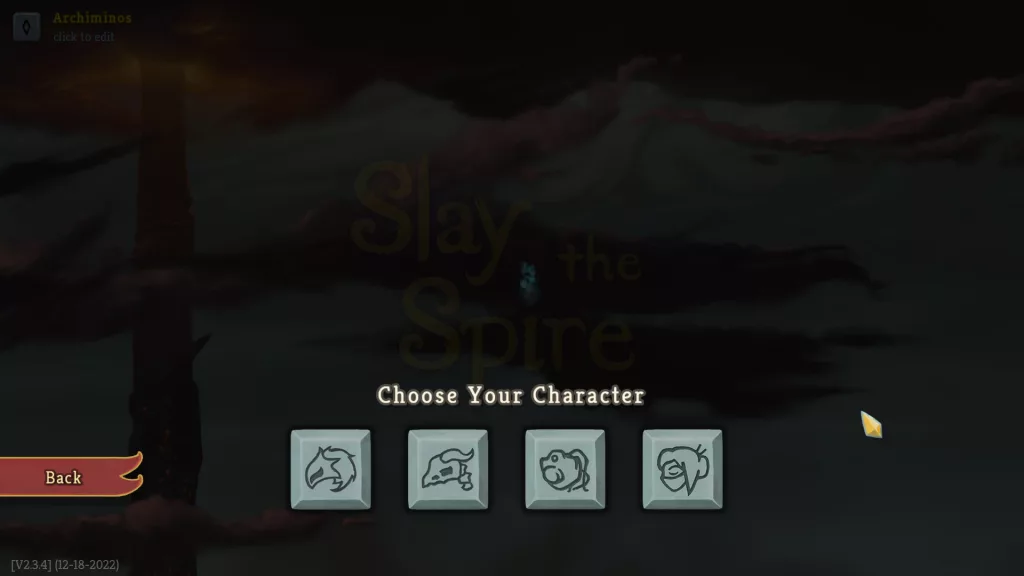While I was away for Christmas I wanted a game to play during my downtime. Slay the Spire is available for mobile. I spent a lot of time playing the Steam version, so I decided to try the Android version. It’s pretty fun to play on a phone as it turns out.
Where Rogue Tower combines tower defense with roguelite mechanics, Slay the Spire does the same with card collector games and roguelites. The goal of the game is to ascend a tower, slaying enemies using cards you collect as you go.
A Game of Cards
At it’s core, Slay the Spire is a deck building game. You collect cards as you play the game, slowly building a deck that you will use in the endgame. After every battle you will be given a choice of cards to choose from. You have to be careful what you choose, as the wrong card in the right deck can destroy a build. Sometimes the best choice is no card at all.
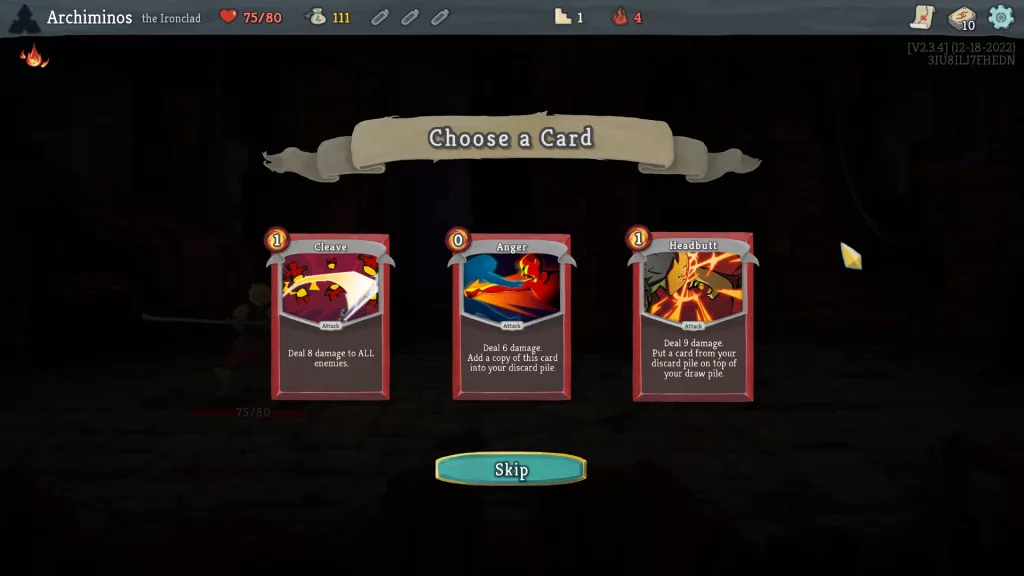
There are three main types of card. Attack Cards do damage against an enemy or enemies. Skill cards can provide armour to block damage, or have various different effects such as drawing more cards or inflicting status effects. Power Cards are consumed after use, but have permanent effects that last for the rest of the battle.
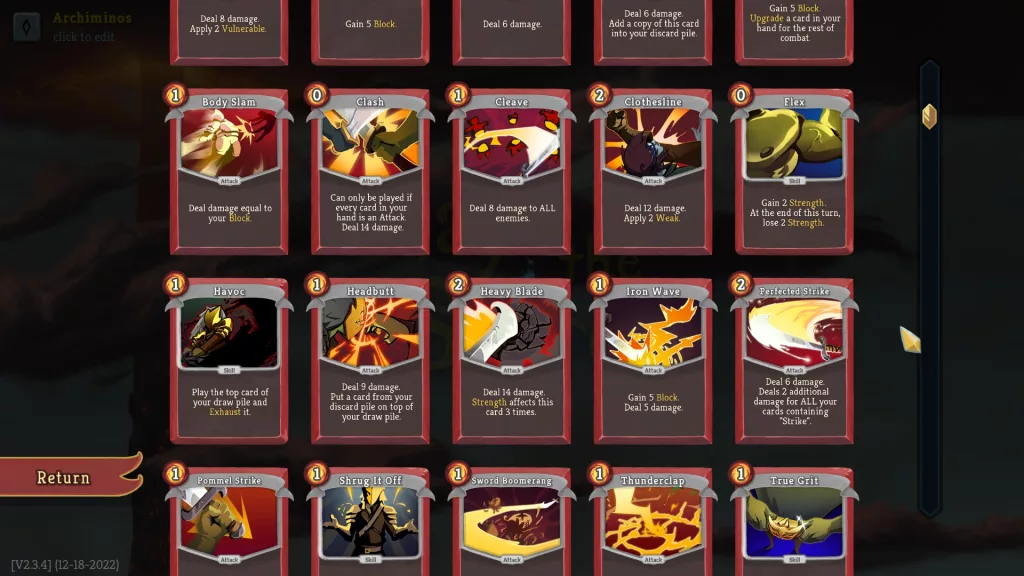
There are also two negative kinds of cards. Status cards are usually added to your deck by enemies during a battle. They are temporary and will be removed when the battle ends, but can have negative effects such as doing damage, reducing energy, or just being a useless card you can’t play. Curse cards also have negative effects, but are permanently added to your deck. They persist between battles, and need to be removed either at a shop or through a random encounter.
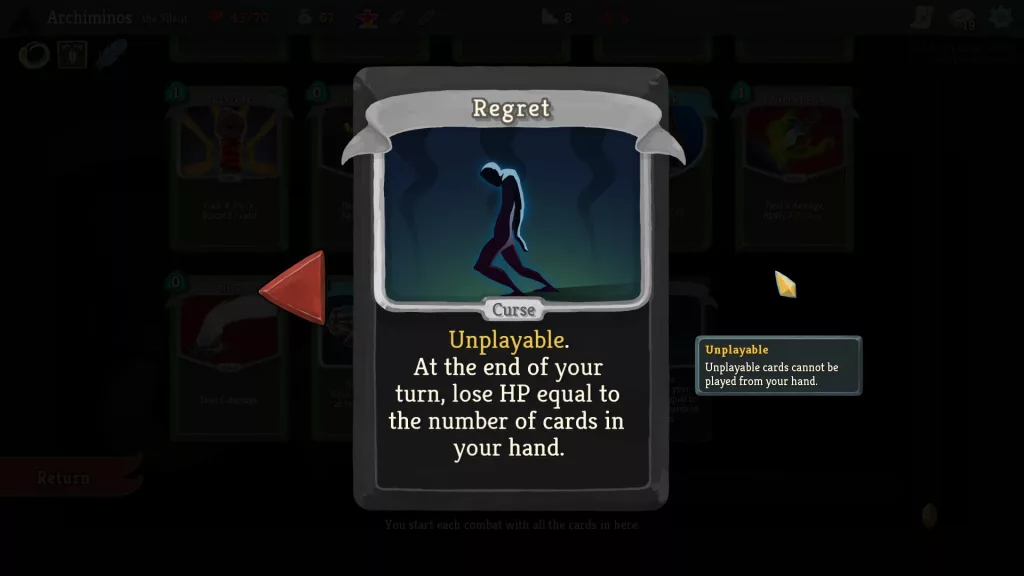
The number of cards you can play in each round is limited by your Energy. Usually you have 3 energy, but this can be changed through various effects and powers. You draw a number of cards each round (5 by default), and choose what to play from these cards.
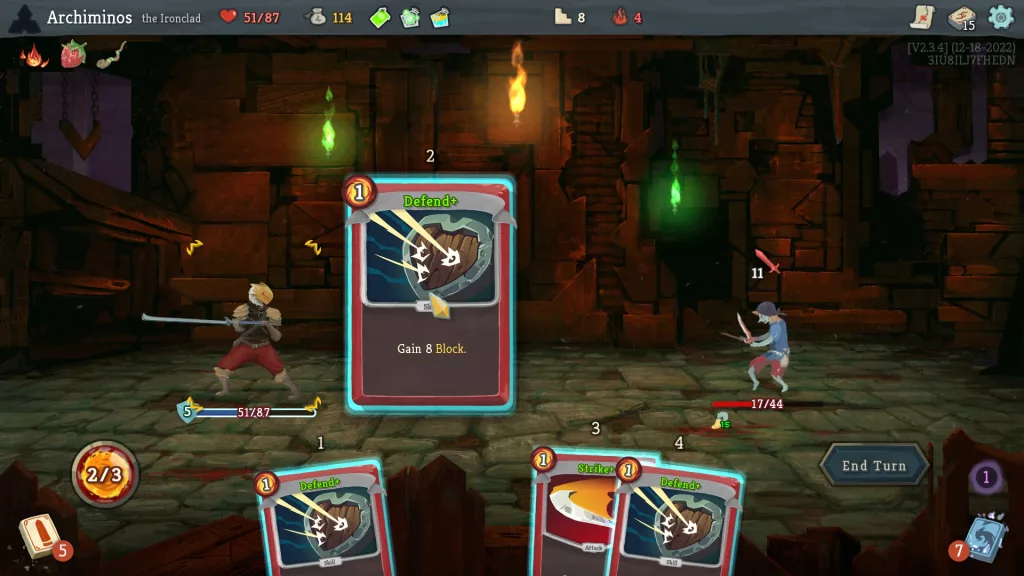
Cards can also be upgraded. This can usually only be done once, but adds various benefits to the card, such as increased damage or a lower cost. The effect of an upgrade depends on each card.
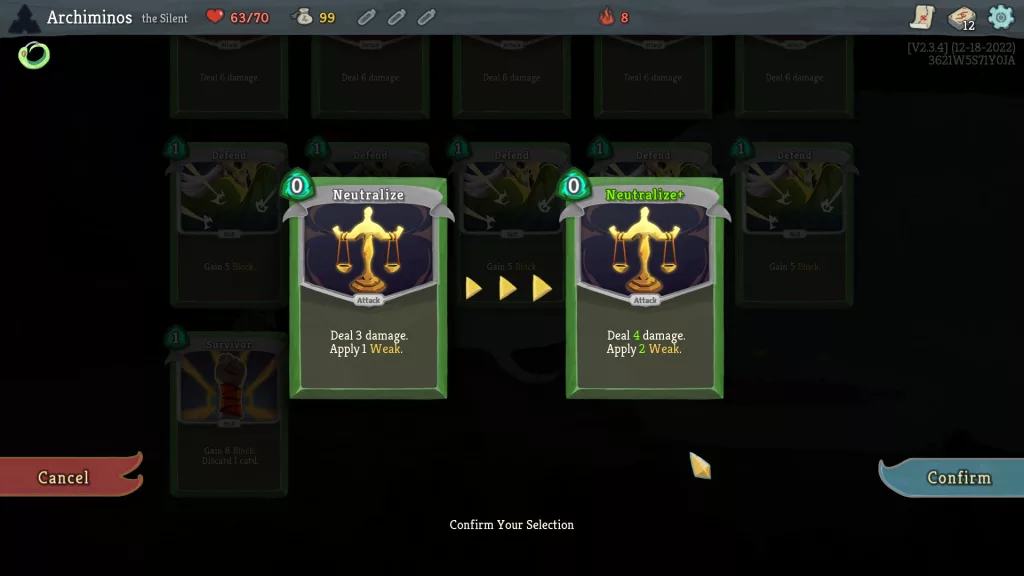
The beauty of this game is that it is built around synergy. Your true goal is to create a deck using specific cards that work together well. At shops or during various encounters you get the opportunity to remove cards. For certain builds you may want to remove more than just curses.
Collect ‘Em Up
It isn’t just cards that you collect as you go. Relics can be found, which grant you permanent bonuses (well, usually bonuses). Draw extra cards, have more energy, deal extra damage and so on. Some relics can have side effects, which can lead to some interesting choices.
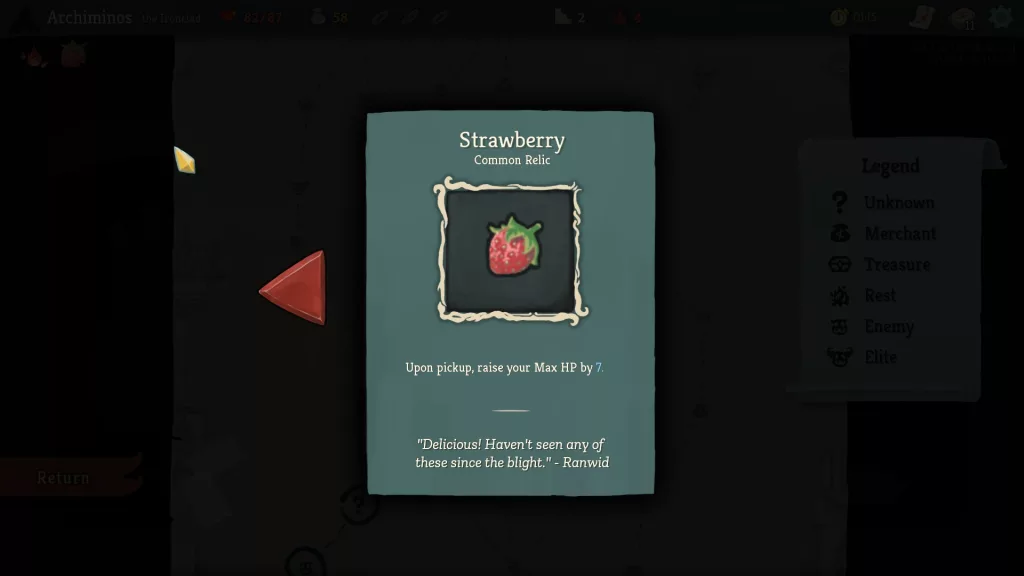
You can also find Potions, which are one-time use items that can give a boost during combat. Increased strength, extra cards, even resurrection are possible effects with potions.
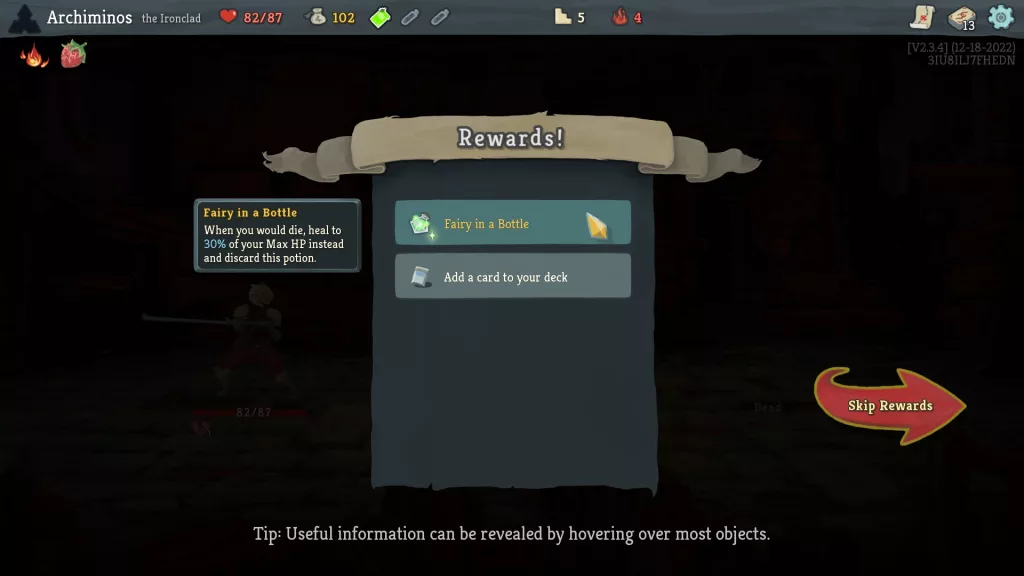
These add an extra layer to the synergy gameplay. The right relics with the right cards can create an extremely powerful deck. One of my favourite synergies are cards and relics that actually make it beneficial to collect curses. You can end up with many curses in your deck, yet still maintaining a viable build.
The Cast
Further variety is added to the game through the characters. When I started playing the game it had three characters, but they added a fourth completely for free. Each character has its own unique play style, marked by their available cards and relics. Their starting relic relates to their main ability, and the cards and relics available enhance their core style of play.
The Ironclad is the most basic of characters. This character is a warrior all about attacking, and many of the cards relate to this, containing various different kinds of attacks. Even defense can be turned into an attack, with a card that does damage based on how much block you have.
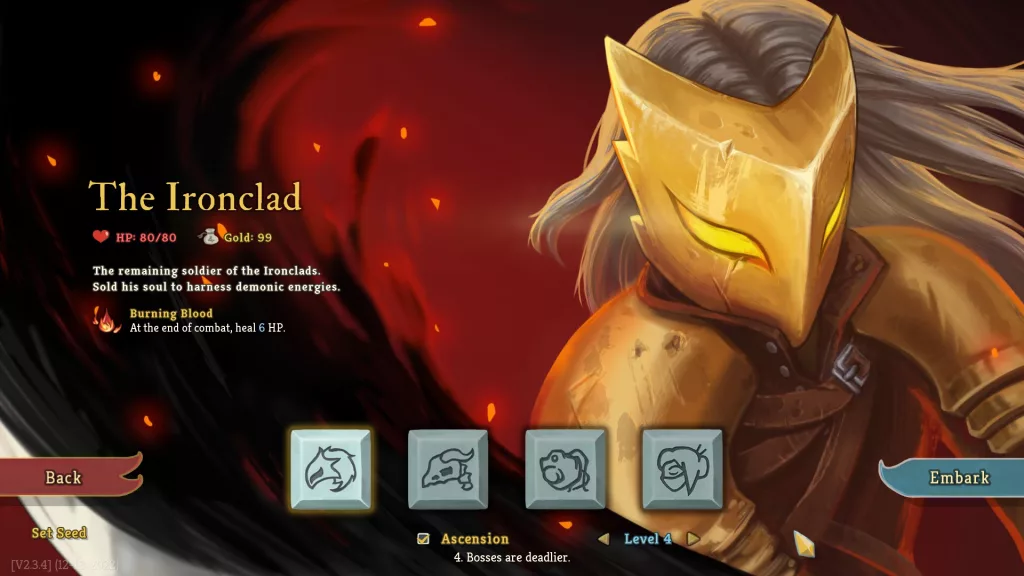
The Silent is all about quick low damage attacks and poison. This assassin type character excels at the long game, slowly chipping away at health and raising defenses. You’ll find it easy to play a lot of cards per round with this character.
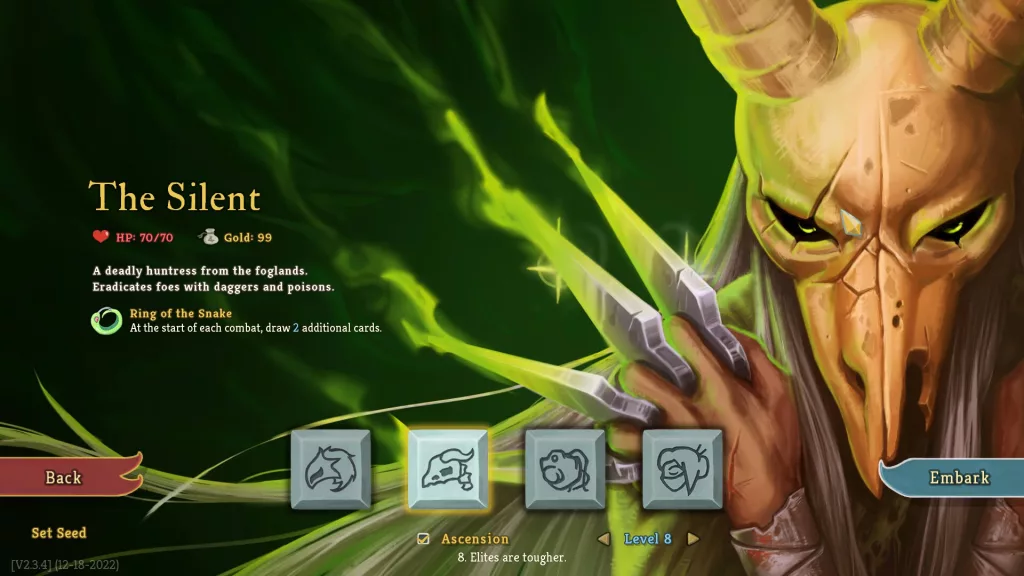
The Defect uses orbs that can have various effects. Starting with three orb slots, the Defect can summon orbs that will activate at the end of each round, damaging enemies, raising block, or increasing energy. When an orb is forced out of a slot, it is evoked and activates with an increased effect (e.g. more damage) before disappearing. Cards can summon orbs, increase Focus which increases the power of orbs, add more orb slots, or activate/evoke orbs more often. With the Defect, you tend to use a lot of Power cards with many builds.
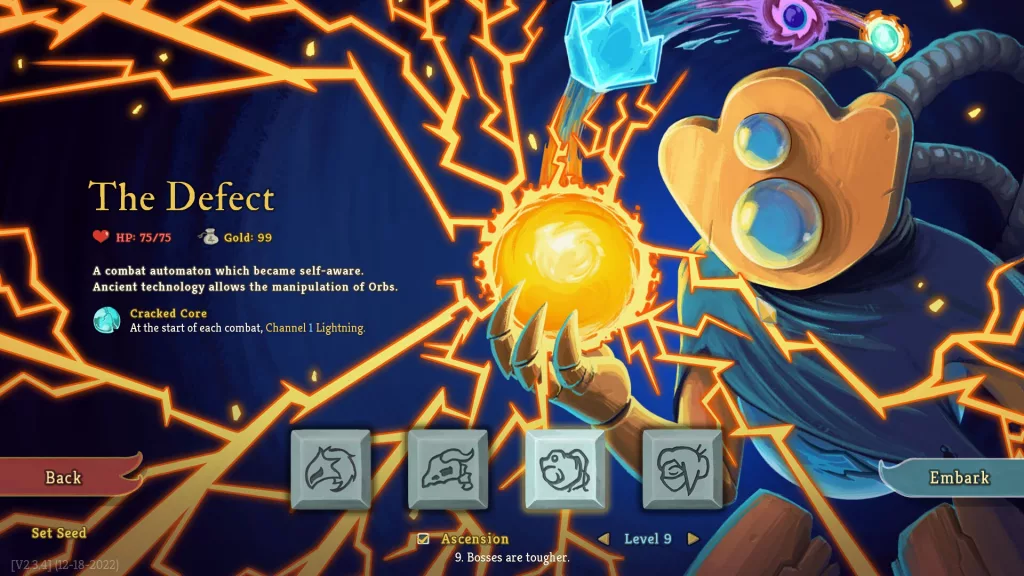
The Watcher is all about stances. This character can adopt various stances: Wrath where she does double damage at the cost of taking double damage; Calm which gives more energy when exited; and Divine, a rare stance that allows for triple damage. Cards in her deck allow you to dance between the stances, as well as Scry into cards that are about to be drawn so you can discard cards you don’t want.
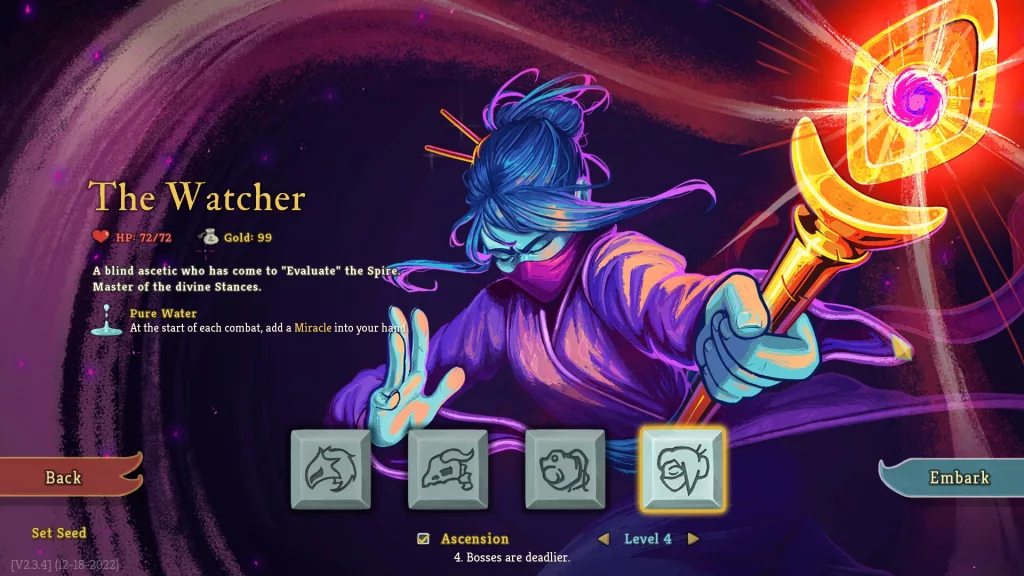
In addition to these characters there are also Colourless cards. These cards are available to all characters, but usually only appear in random events or shops. They can be useful to all characters, and sometimes hold great power.
Each character allows for different styles of play, different synergies, and different builds. It creates a game that lasts: mastering one character will still leave three other characters for you to master.
A Game in Three Acts
The game starts with a choice. You can choose a small boost to start your game. Enemies in the first three combats will have 1hp. Swap your starting relic for a different one. Gain a rare card. Despite all the other mechanics in the game, this is the core game loop: make a choice.
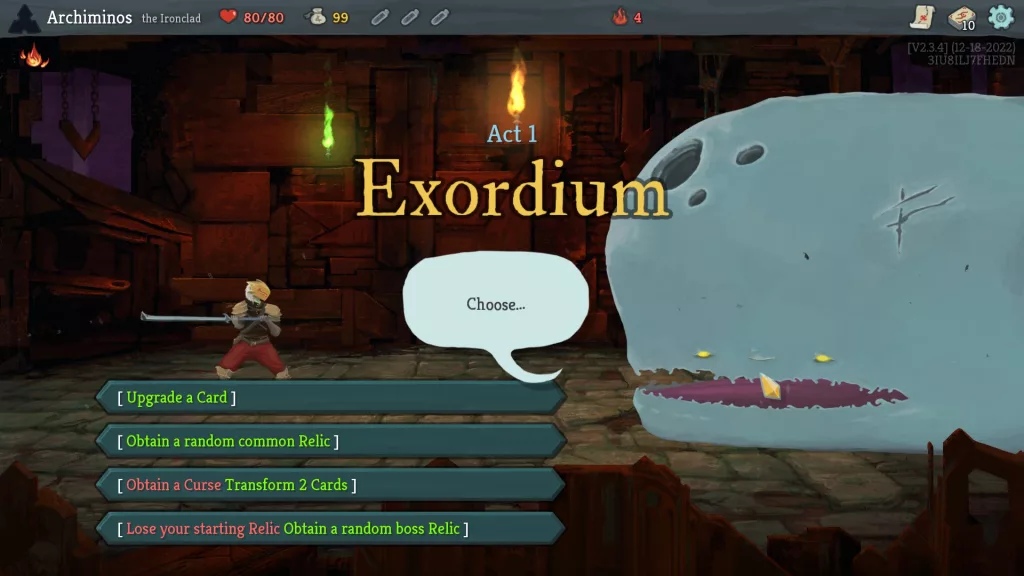
You are then presented with a map. You can choose one of four starting locations that will allow you to take different paths through the game. Each path will have different encounters along it, so you need to choose carefully. Fighting too many elites can lead to death. Resting too much can lead to an inferior deck.
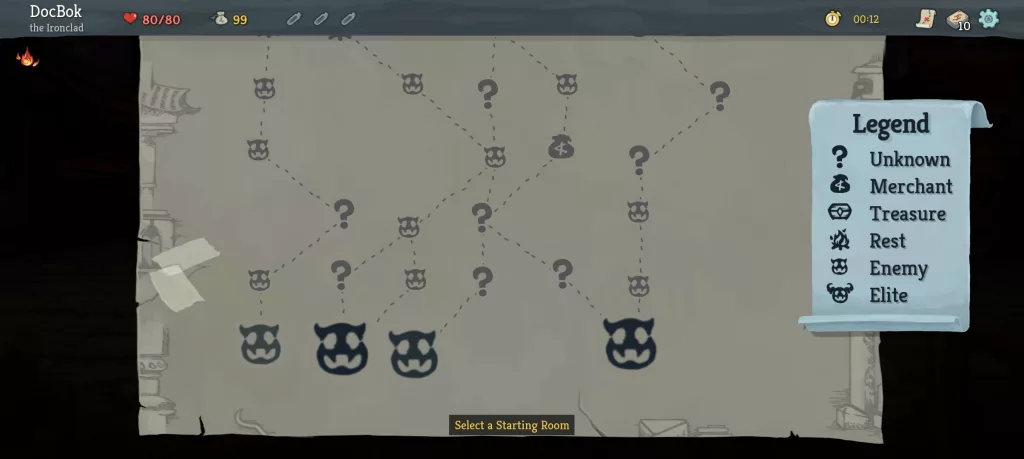
There are several different kinds of encounters you can have. Enemies are the standard card game, rewarding you with gold, a new card and sometimes potions. You have a choice of three different cards after each battle, but sometimes it can be better to choose no card at all.
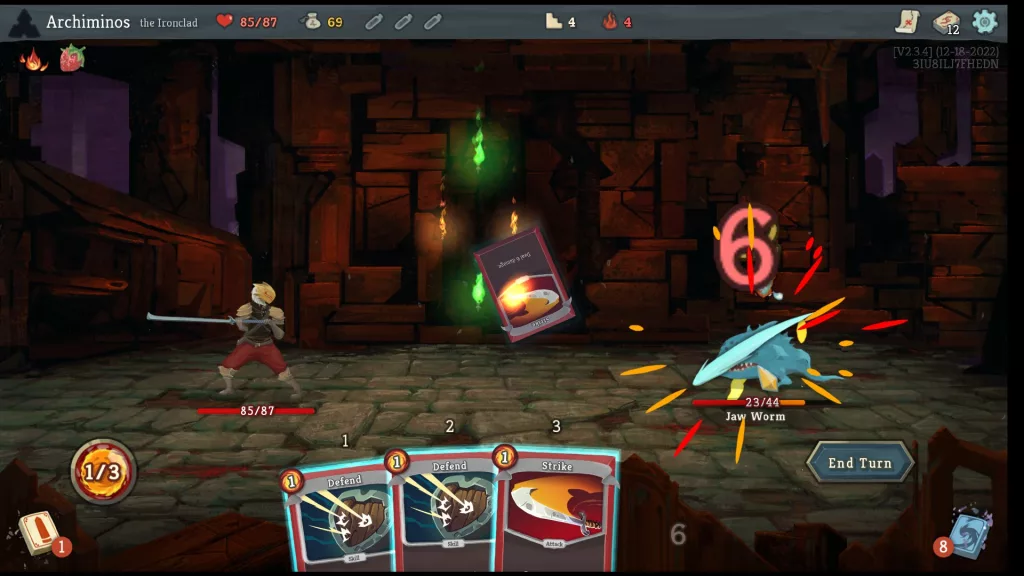
Elites are tougher battles, rewarding the player with a relic and rarer cards after the battle. Tough, but with a greater reward.
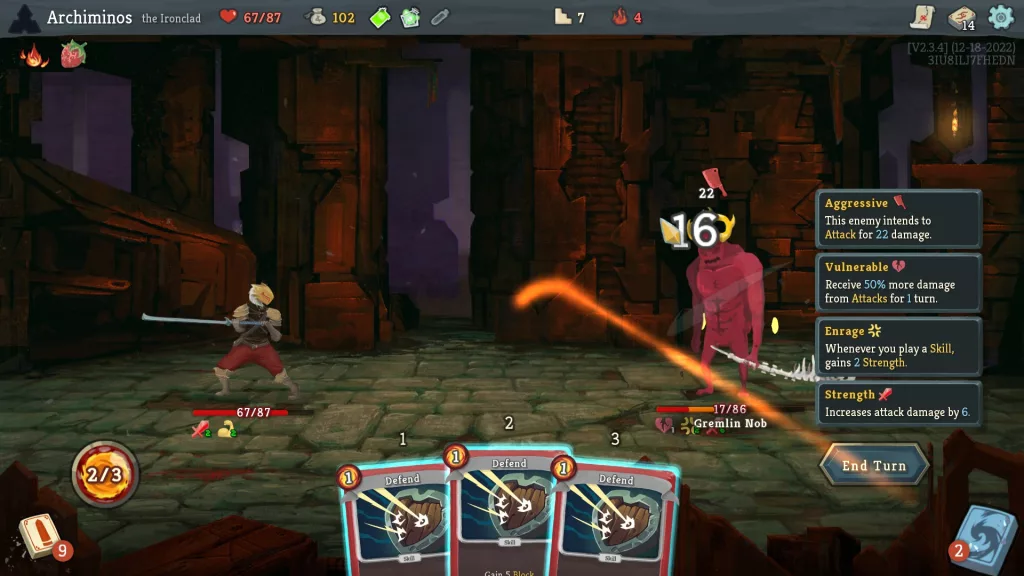
Treasure chests contain relics to improve your builds. There usually isn’t a choice in these encounters, but you can choose to leave the relic behind if it’s not good for your build.
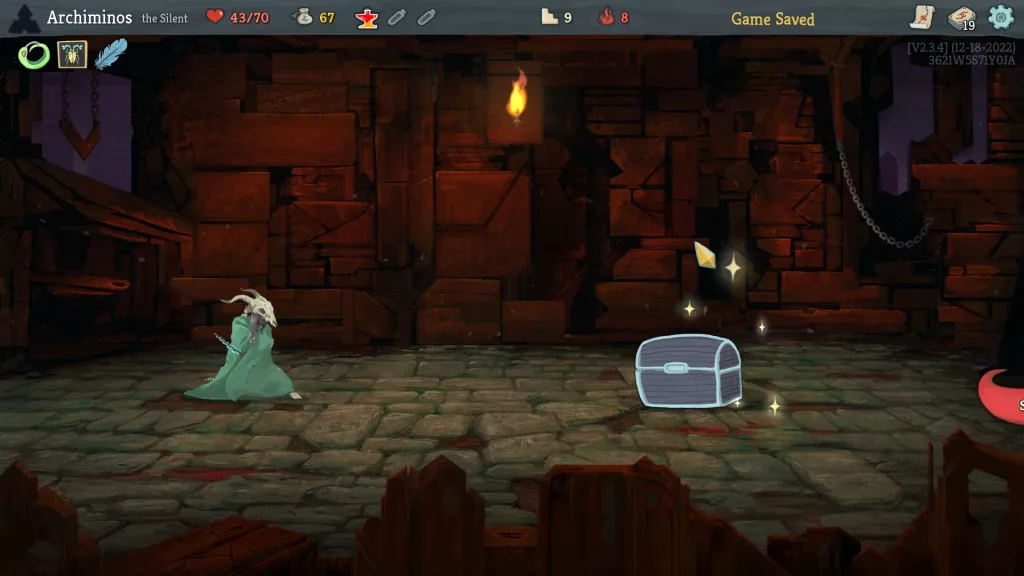
Merchants are where you can spend gold earned from battles. Here you can buy cards, potions, relics, or pay to remove a card from your deck. They’re a good place to build out or prune a deck.
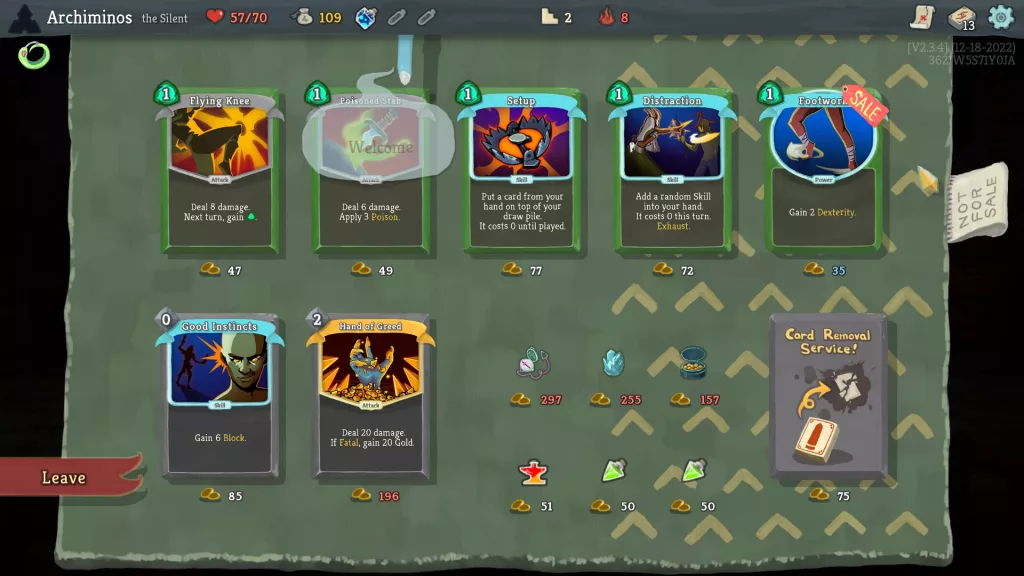
At Rest sites you can restore health or upgrade cards in your deck. If you don’t need either then these can be a waste of an encounter, but at the least they can guarantee you won’t lose anything.
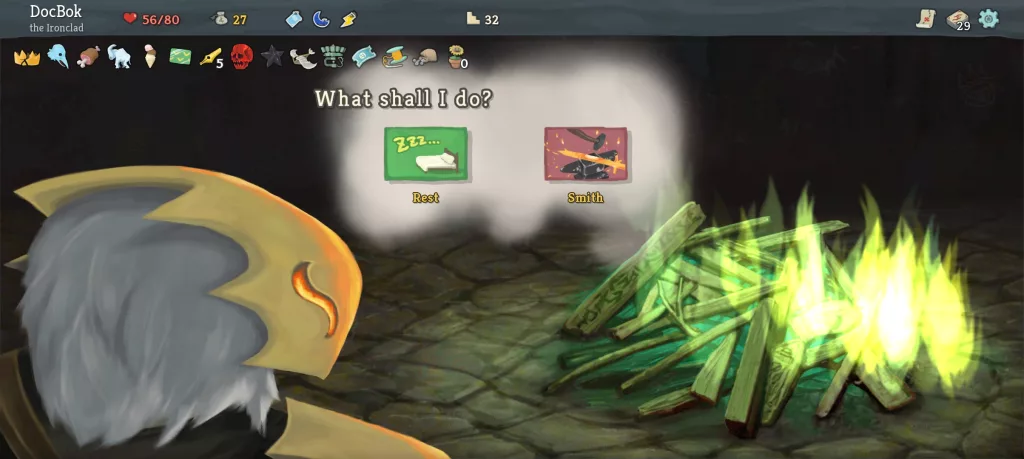
Unknown encounters are usually dialogues where you are given a few choices. Sometimes they can be minigames. Sometimes they are battles. The rewards from these encounters can be varied, and sometimes they aren’t beneficial at all.
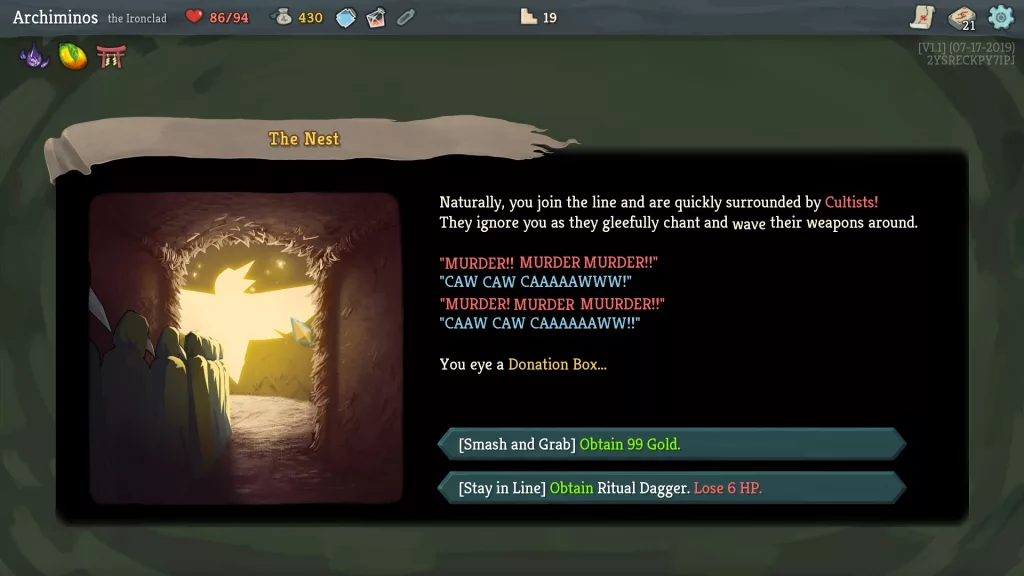
A full game consists of three maps, or Acts, containing 15 encounters in each. At the end of each act you will fight a Boss. This is an extremely tough enemy, and will easily destroy you if you aren’t properly prepared. To finish a game, you need to defeat all three bosses.
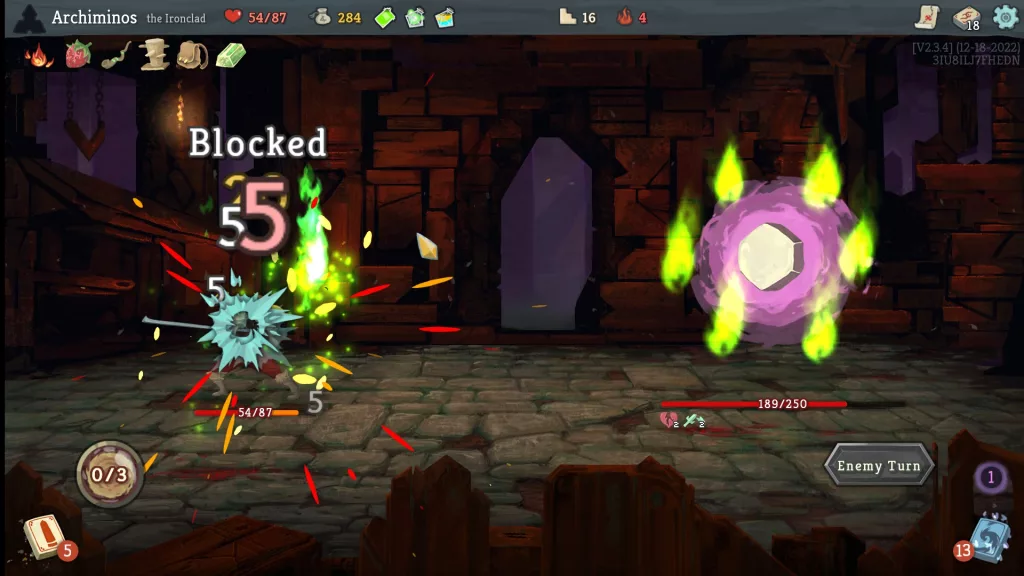
That’s Not All
Finishing the game is one thing, but Slay the Spire throws some extra challenges your way to keep you engaged. Initially as you progress you will unlock new cards and relics for each character.
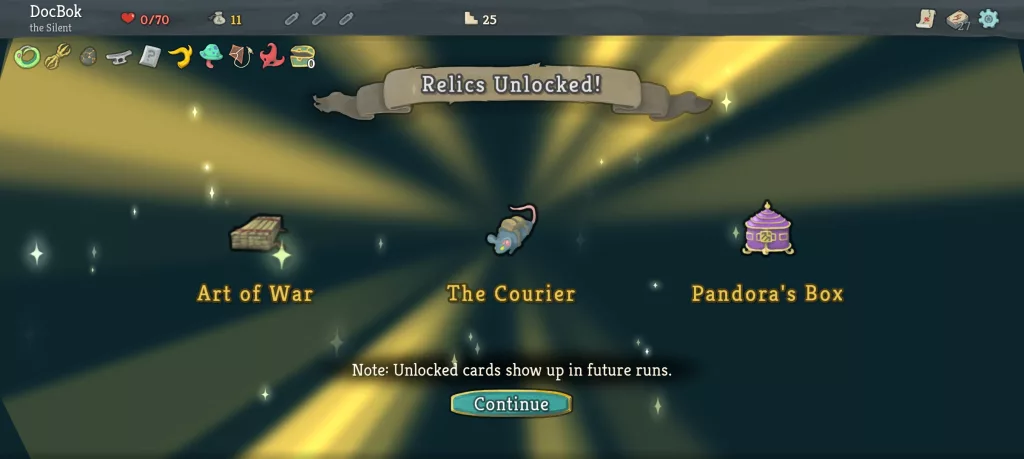
When you first finish the game, you will unlock Ascension. Each Ascension level will increase the difficulty of the games in different ways. Elites will appear more often on the map. Or enemies will be tougher. Or you will recover health slower. Each one more challenging than the last, you will have to hone your deck building skills if you want to reach the highest Ascension level.
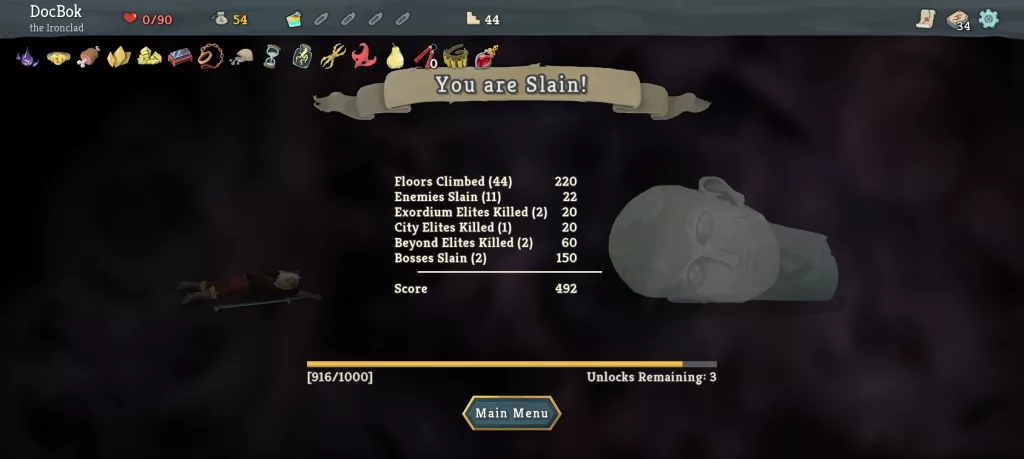
A Custom game can be created that allows you to play with different rules. Maybe you want to start with 50 random cards. Or have a neverending game. Or have all character’s cards available. Maybe you want the game to be even harder. With a custom game you can create a completely unique game.
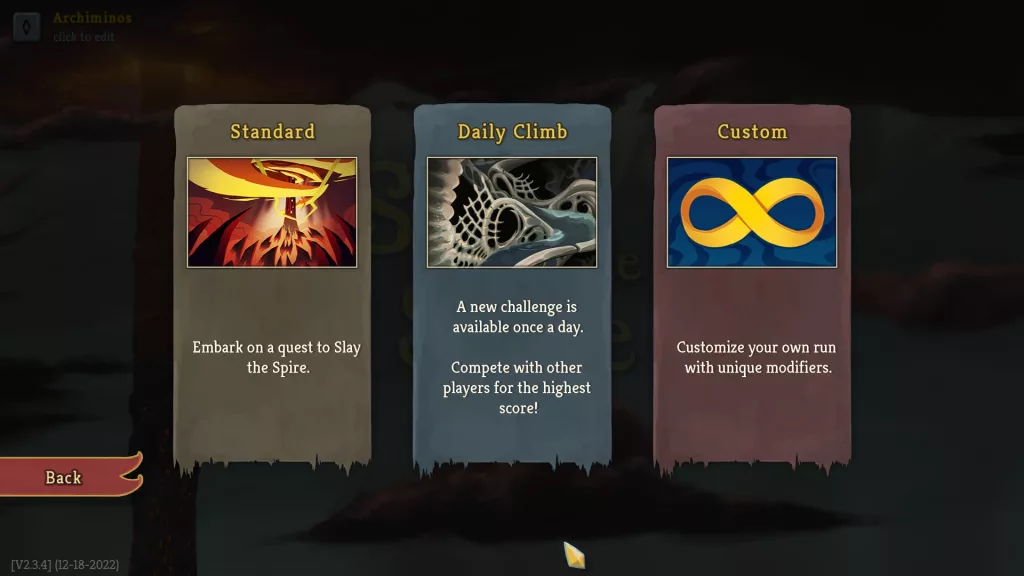
These rules are used by the Daily Challenge. These are competitive games that use around three custom rules each day. There is a global leaderboard in this game mode, showing which players have managed to score the highest in today’s challenge. Slay the Spire is a single player game, but that doesn’t mean we can’t have competition.
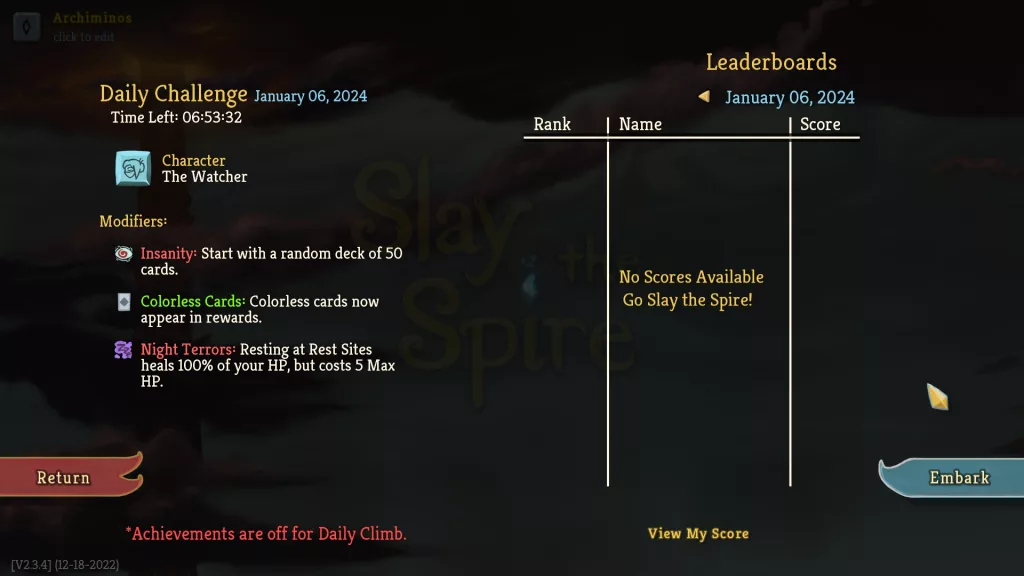
A Series of Choices
When I was studying game development at university, one of the questions you come across is the obvious one: what is a game?
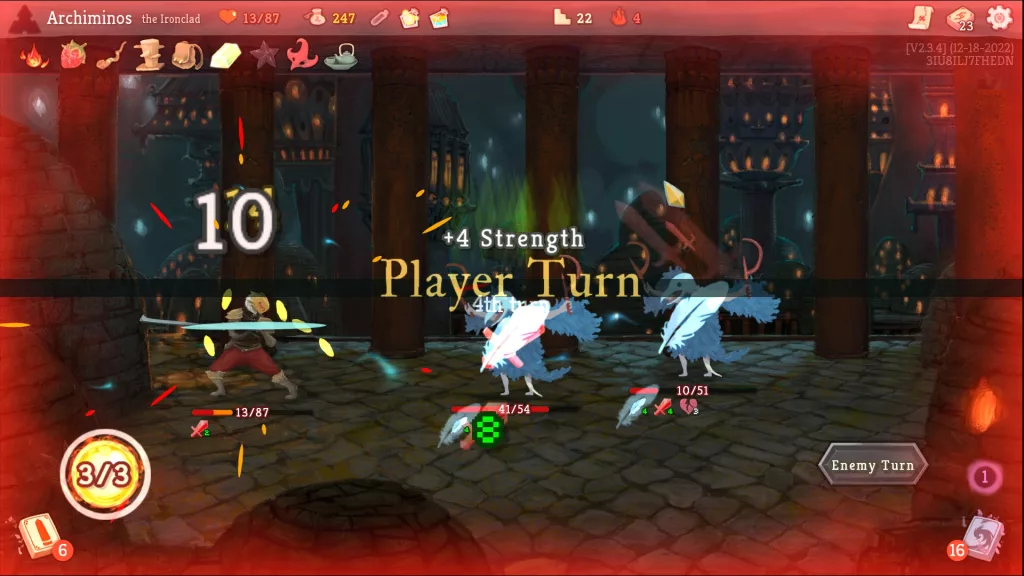
It seems like an easy question to answer, but it’s one of those things where you know what it is when you see it. Coming up with a concrete definition is actually pretty hard, and there are several sociology books that talk about what a game is, what play is, and how they are important to evolution and survival of not just humans, but all animals.
But I digress. The point is that one of the definitions I came across was that “a game is a series of choices”. If any game fits this definition, it is Slay the Spire. Every single part of the game has been designed to be a choice. What path to take, what card to choose, what to play, what to buy, and so on.
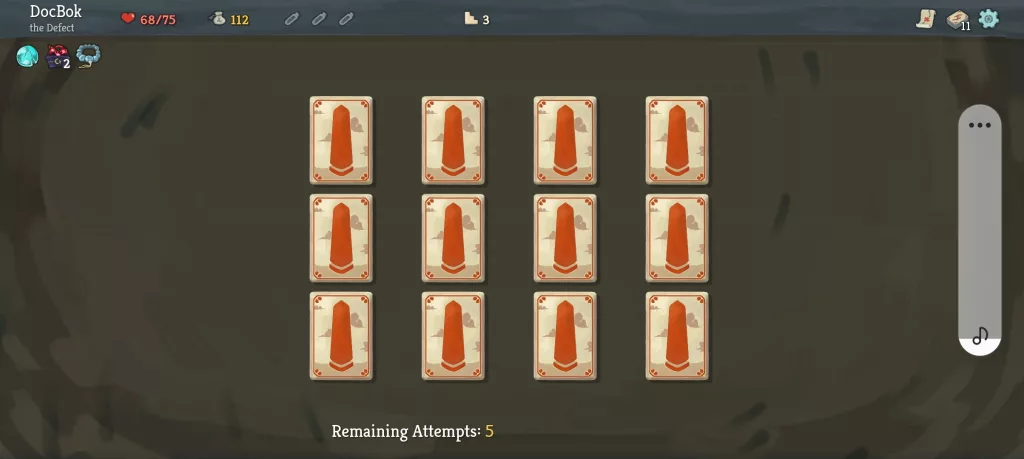
And each of these choices has an impact on the rest of the game. Every choice matters, or at least feels like it does. When you fail a run you are left pondering, what if I made a different choice? You slowly learn how to make better choices, but you can never be 100% sure you made the right one.
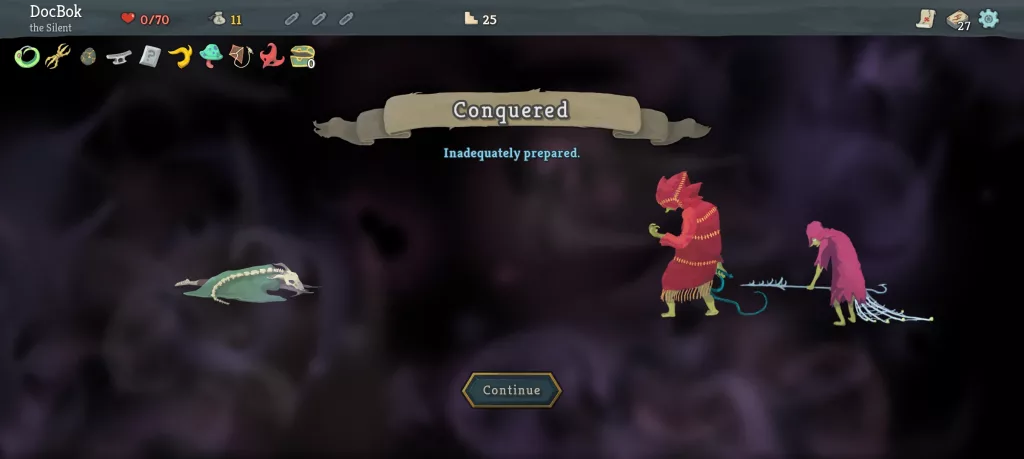
And that’s the beauty of the game. I don’t think I’ve ever felt cheated when I lost a run. I look back and realise I made bad choices. I could have done better. And I will do better.
Now I need to make a choice.
